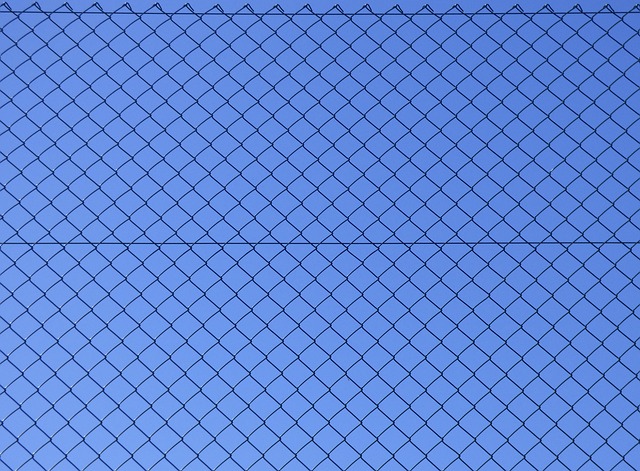Large properties present unique fencing challenges, demanding solutions that balance aesthetics with affordability. This article delves into the diverse world of cost-effective fencing options, addressing the specific needs of expansive spaces. We explore traditional fencing methods and their limitations, followed by an in-depth look at alternative materials and installation strategies that promise both durability and economic sense. By considering DIY approaches versus professional services, homeowners can make informed choices to safeguard their investments while enhancing outdoor spaces.
- Understanding Fencing Needs for Large Properties
- Traditional Fencing: Costs and Limitations
- Cost-Effective Alternatives: A Look at Options
- Durable Materials for Longevity and Savings
- DIY vs. Professional Installation: Budget Impact
- Maintaining Your Cost-Effective Fence
Understanding Fencing Needs for Large Properties
Large properties present unique fencing challenges compared to smaller plots. The primary considerations shift from aesthetic appeal to functionality, security, and durability. Property owners must assess the perimeter’s length, terrain variations, and potential security threats. For instance, a vast field requires a fence that can withstand wildlife and livestock while defining property boundaries clearly. Meanwhile, a residential estate might demand a more sophisticated design to enhance curb appeal and provide privacy.
Understanding these varying needs is crucial when selecting fencing solutions. The right fence should not only match the property’s aesthetic but also serve its practical purposes. For large areas, cost-effective options include durable materials like vinyl or wood, which can be installed efficiently without compromising quality. These materials offer long-lasting protection while remaining accessible to homeowners seeking both functionality and value.
Traditional Fencing: Costs and Limitations
Traditional fencing methods, while popular for many years, come with a hefty price tag, especially for large properties. The cost of materials, labor, and installation can quickly add up, making it an expensive endeavor. Typically, wood and vinyl are common choices, each with its own set of drawbacks. Wood fences require regular maintenance to prevent rot and pest damage, which increases ongoing costs. Vinyl options might be more low-maintenance but often lack the aesthetic appeal of traditional wooden designs.
Furthermore, traditional fencing has limitations in terms of flexibility and customization. Standard fence panels offer limited design choices, and installing custom-made solutions can significantly drive up expenses. This restricts property owners’ ability to create unique barriers that complement their landscapes. As a result, many large properties opt for alternative fencing solutions to address these challenges cost-effectively.
Cost-Effective Alternatives: A Look at Options
When it comes to fencing large properties, traditional options can be both expensive and time-consuming. However, there are several cost-effective alternatives that offer durability and aesthetic appeal without breaking the bank. One popular choice is chain link fencing, which provides a secure barrier at a fraction of the cost of wood or vinyl. It’s versatile, easy to install, and requires minimal maintenance.
Another option is steel or aluminum fences, which are incredibly durable and come in various styles, from traditional to modern designs. These materials offer long-lasting protection against intruders and wildlife while adding a touch of sophistication to your property. Additionally, wrought iron fencing is an elegant choice that can enhance the overall look and value of your land, all while remaining cost-efficient when compared to other materials.
Durable Materials for Longevity and Savings
When considering fencing solutions for large properties, opting for durable materials is a strategic move that offers both longevity and cost savings. High-quality materials like steel or vinyl can withstand harsh weather conditions, extreme temperatures, and the wear and tear of time. This means your fence will require less frequent repairs or replacements, reducing long-term expenses.
These materials are also resistant to rot, rust, and corrosion, eliminating costly maintenance issues that often arise with wooden fences. Plus, their durability ensures they retain their structural integrity, providing a secure boundary for years to come. Choosing durable materials from the outset can save property owners significant time and money in the fencing investment.
DIY vs. Professional Installation: Budget Impact
When considering fencing for large properties, one key decision point is whether to opt for a DIY approach or hire professional installers. For those on a tight budget, doing it yourself can be an attractive option, as it significantly reduces labor costs. Fencing materials are relatively inexpensive, and with careful planning and basic tools, homeowners can install a sturdy fence without breaking the bank. However, time is a valuable resource, and DIY projects often take longer than anticipated, potentially leading to delays in your property’s protection.
Professional installers bring expertise and efficiency, ensuring a faster completion time. While their services come at a cost, it’s important to weigh this against the potential benefits of having a quality fence installed promptly. The budget impact is substantial; professional installers charge based on the project scope, but this often results in a more robust and long-lasting fence. Compare quotes from multiple professionals to find the best balance between quality and affordability for your large property fencing needs.
Maintaining Your Cost-Effective Fence
Maintaining your cost-effective fence is key to ensuring its longevity and keeping your property secure. Regular cleaning and inspections are essential, especially in areas prone to weather damage or with heavy foot traffic. A simple cleaning routine using mild soap and water can prevent buildup of dirt, dust, or even graffiti. For wooden fences, applying a fresh coat of sealant every few years will protect against rot and insects, preserving its aesthetic appeal and structural integrity.
Iron or metal fences require less upkeep, but a periodic check for rust or damage is still necessary. Repainting or re-coating these types of fences can restore their original look and prevent future issues. Keeping the fence line free from overgrowth—such as weeds, shrubs, or trees—will not only enhance its appearance but also make maintenance tasks easier and safer. Regular trimming ensures a clear view and prevents plants from damaging the fence structure.
